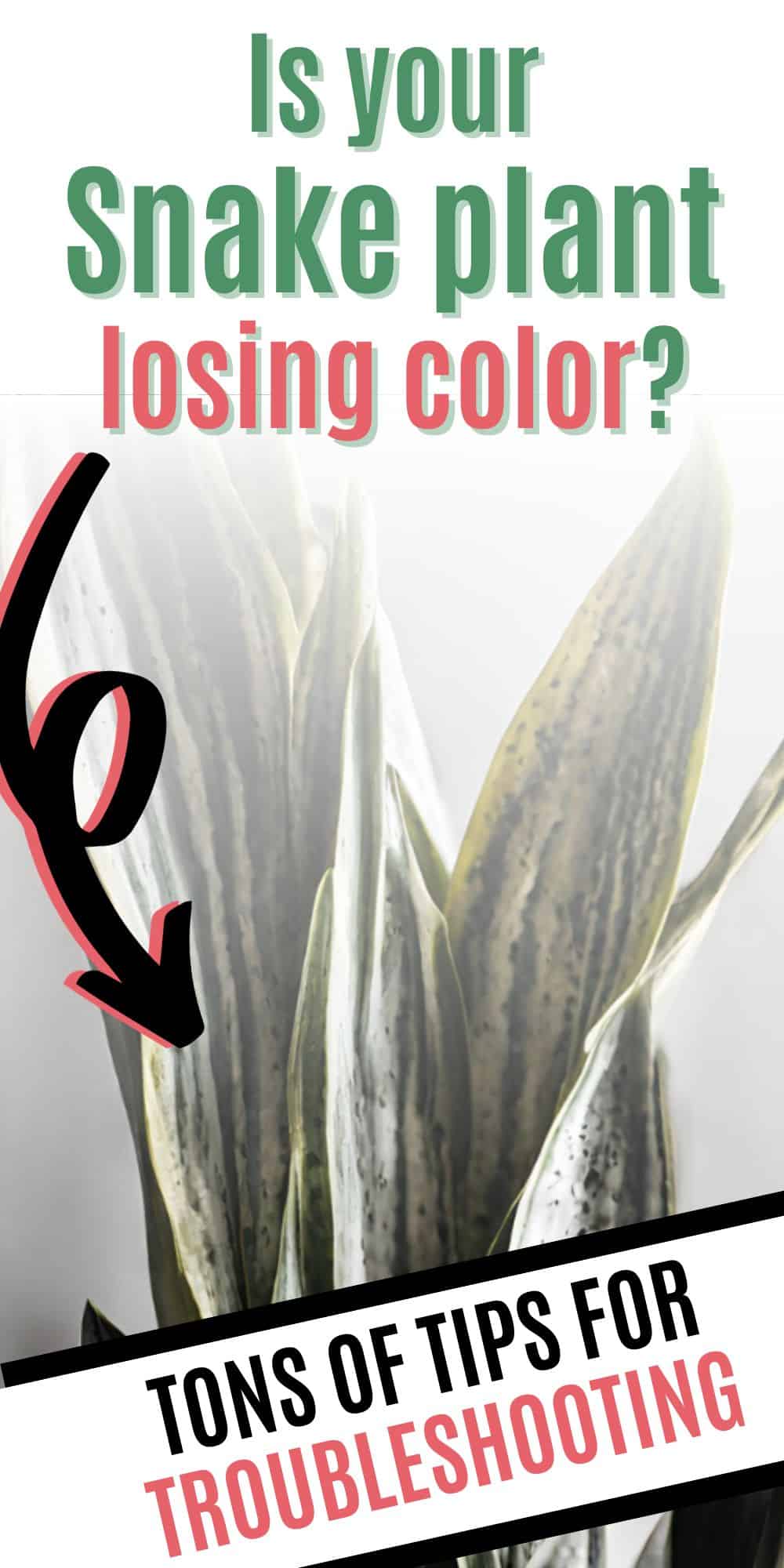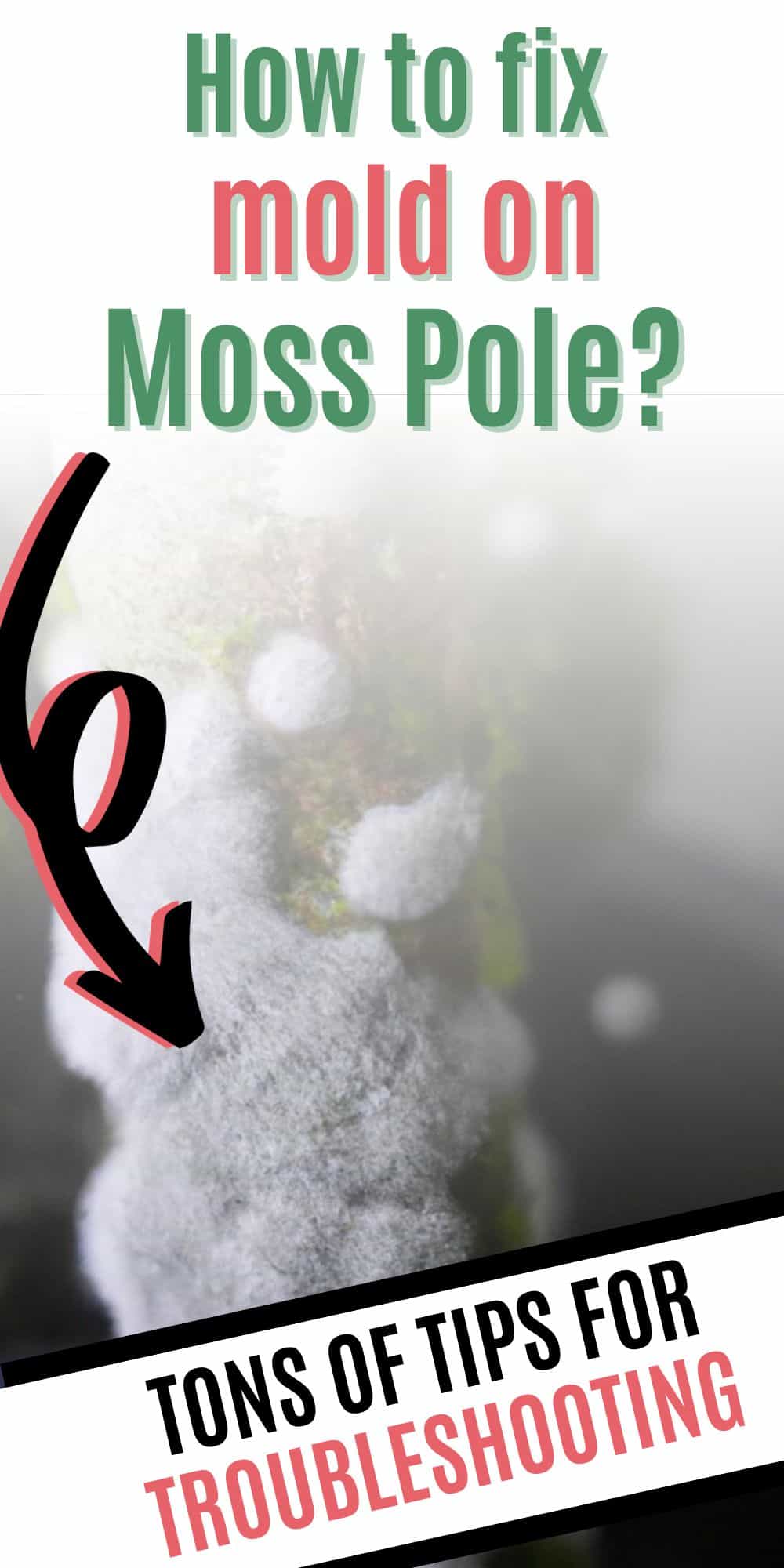Troubleshooting your purple shamrock plant? Here's why your oxalis triangularis has spots on it's leaves and what to do about it!
The purple shamrock plant is a super easy to care for houseplant. But, even easy house plants can have problems!
Today I want to talk about a problem that my oxalis triangularis plant recently got - spots on it's leaves - and ways to fix it.

What causes the purple shamrock plant to get spots on the leaves?
There are a few potential causes of spots on the shamrock plant but here are the most common ones:
- Powdery mildew
- Botrytis blight
- Variegation
- Over fertilizing
- Problems with the rhizome (over watering/rot)
- Dormancy
- Leaf spot/leaf rust
- Too much direct sun
- Ring spot
- Old age
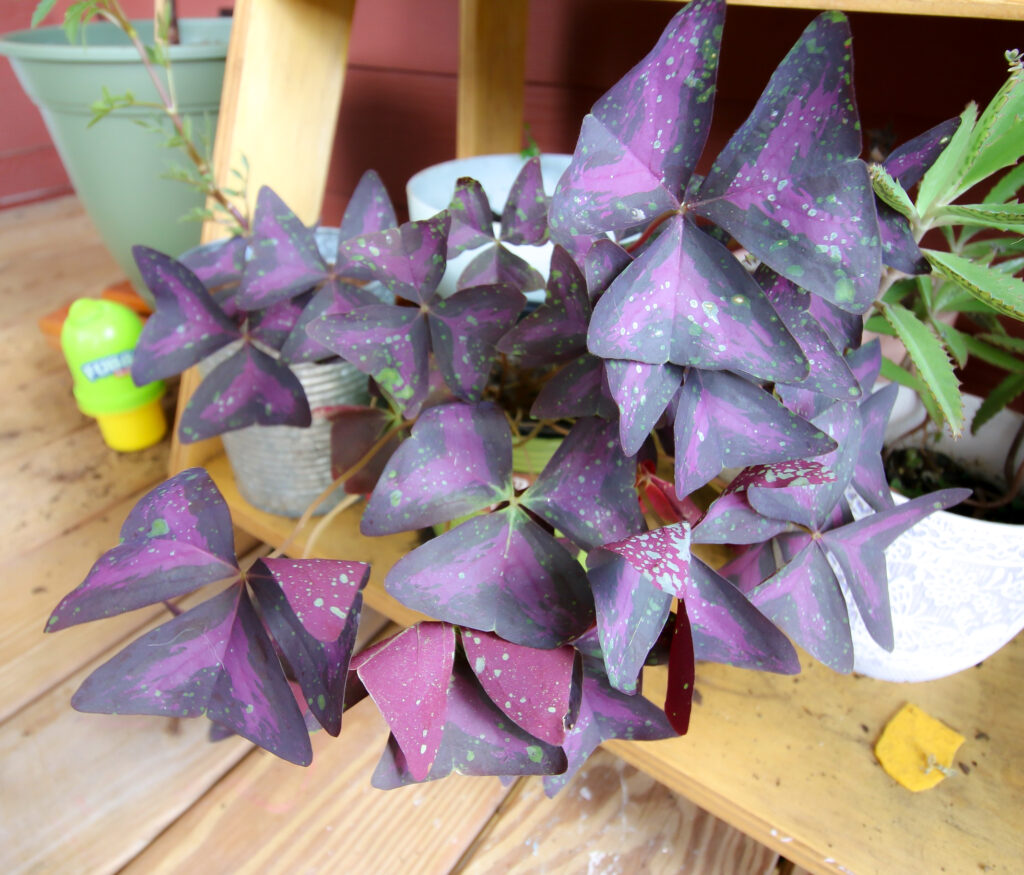
White spots on oxalis leaves
Powdery mildew is a super common oxalis leaf problem. This looks like white powder all over the leaves. The fungus can block the leaves from photosynthesizing and cause the plant to die.
This is often caused by too wet/humid conditions. Let the plant dry out a bit. Don't let it be too crowded in other plants.
You can apply a fungicide to help prevent and clear up this problem.
Botrytis blight is more of a white fuzzy growth on false shamrock plants. This is a mold or fungal infection that will kill the plant. Remove effected leaves ASAP and separate this plant from your others to help prevent spreading.
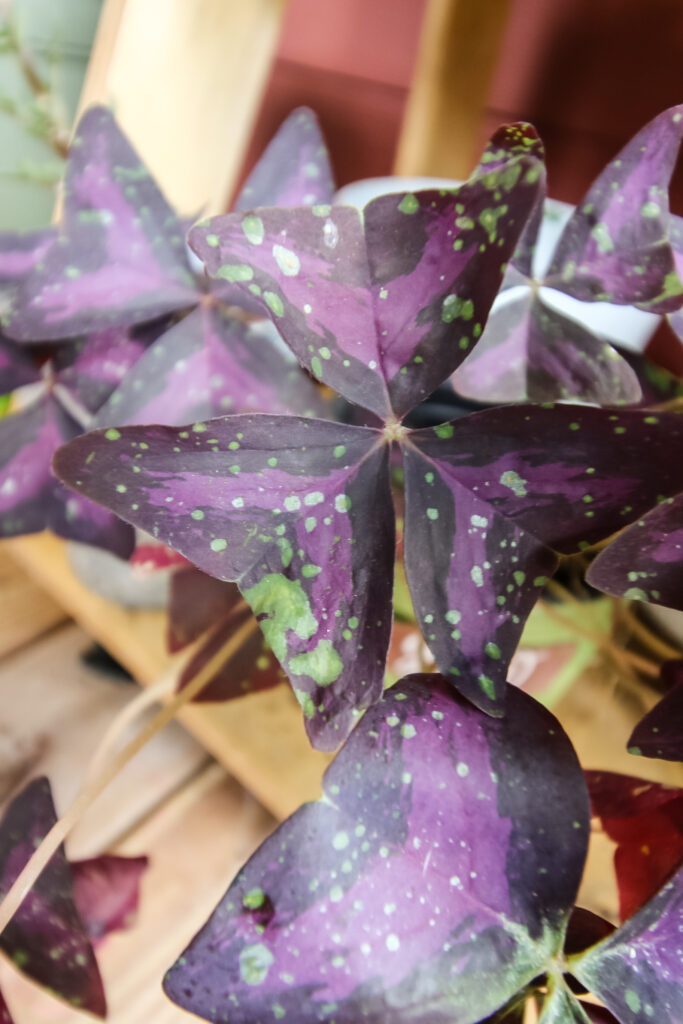
Green spots on oxalis leaves
Green spots could be a type of variegation on your plant - a normal pattern in the leaf. However, if it is sudden and new or paired with withering dropping leaves, it could indicate a problem.
Over fertilizing can cause your false shamrock plant to get green spots on the leaves.
Green spots could indicate problems with the rhizome, or the bulb of the plant. If it has been overwatered, it could be rotting in places. Carefully examine it for soft, mushy spots.
Green spots on your leaves could also be a sign that the plant is getting ready for dormancy. This plant goes dormant once or twice a year, and the leaves lose color before dropping. The purple fades to green, then yellow, then the leaves go limp.
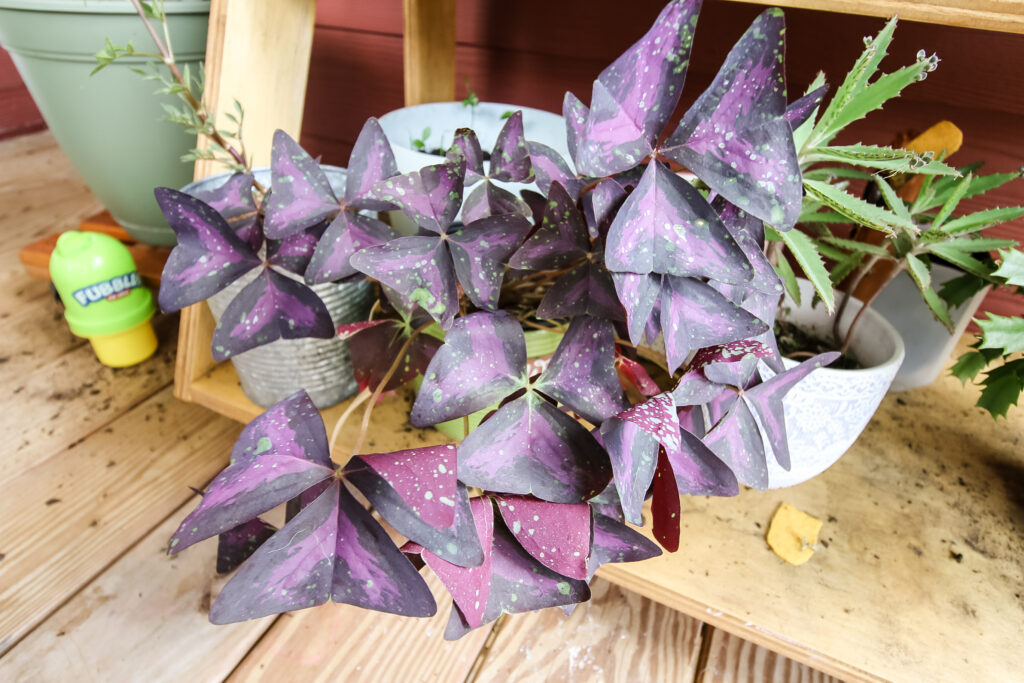
Red spots on oxalis leaves
Red spot is often caused by leaf spot or leaf rust disease. These plants get red/brown colored blotches then turn yellow and fall off.
Remove all effected leaves and check that you are not overwatering the plant. New leaves should come in clean once all the red spot is removed.
Brown spots on oxalis leaves
Brown, crispy spots on leaves often indicate too much full sun or not enough water - either way, the plant is drying out. Check the soil, if it is very dry or hard, up your watering schedule.

Yellow spots on oxalis leaves
Yellowing leaves can be caused by ring spot. This will look like yellow rings that fade to blotches. This is spread by aphids - treat the aphids and remove any contaminated leaves.
Dormancy can also cause these plants to get yellow leaves. It's normal for the leaves to turn yellow and fall off in winter, and they often turn yellow before doing so!
This is similar to old aged leaves which naturally die and fall off to make room for new growth.
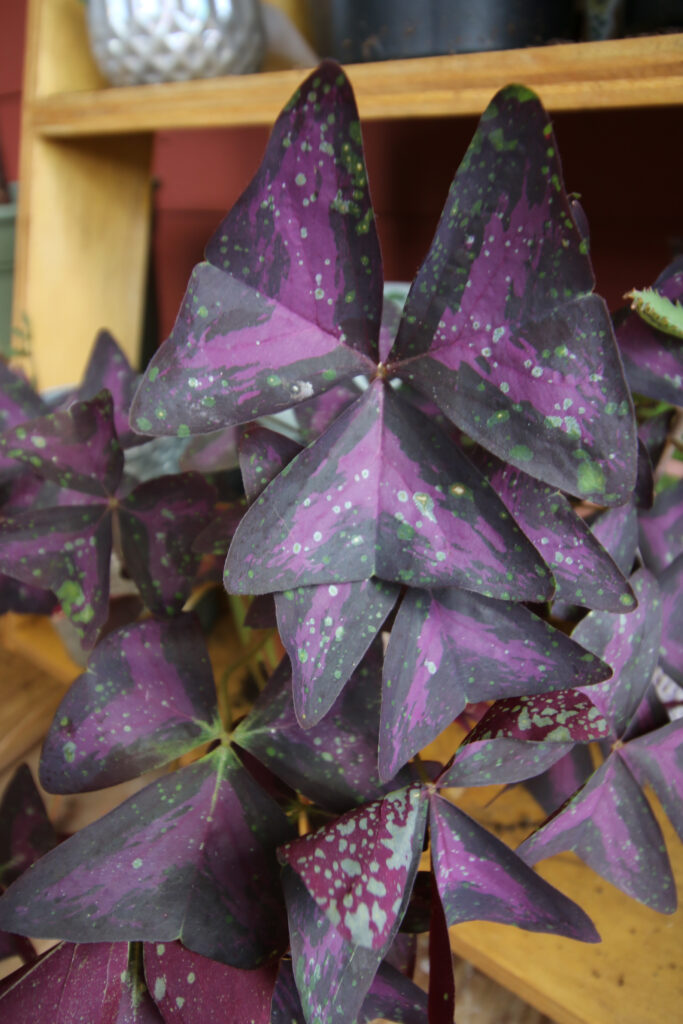
Will the spots go away from the leaves?
Leaves that have been discolored are not going to return to their normal purple color. If it bothers you, you can remove those leaves. Otherwise, new growth should come in normal colored!
Any more questions about oxalis triangularis discoloration?
Before you go...
Ready to get all of your houseplants as happy and healthy as possible? You might be watering them wrong! Be sure to check out our guide on the worst time to water your plants!
Thanks for reading!


Hey there, I'm Morgan, a houseplant enthusiast from sunny Charleston, South Carolina. Growing up surrounded by my mom's lush orchids and African violets, I discovered the magic of bringing nature indoors. Thanks to the pandemic, I delved deeper into houseplants, discovering their power to uplift moods and transform spaces. I'm here to spill all my secrets, helping you pick the perfect houseplant - and make it happy. Let's keep your plants alive, together! 😊

